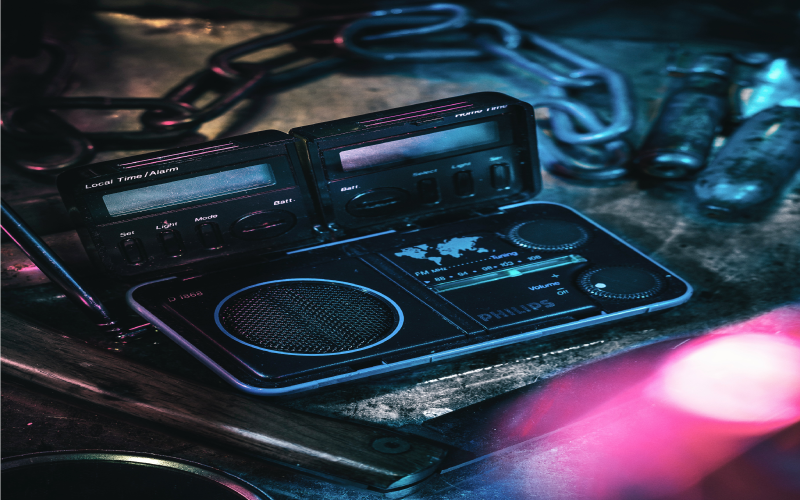The Power of a Big Idea

Several of the case studies in this series may be difficult to comprehend or appreciate, especially for those of the present generation. Simply because the scenario several decades ago was drastically different from what it is today. Pricing, creativity, needs, aspirations and especially technology from back then are quite unrecognisable today. Still, the core message to be taken home is how the brands and agencies in question identified the issue and then worked at conjuring up the solution.
Back in the late eighties, status symbols were very different from what they are now. For the typical middle class household, the kind of Colour TV or sound system that sat in the living room, were showpieces to be flaunted. The sound system had the advantage of being heard even when not seen. Loudness often mistakenly meant a ‘better system’.
It was in such a world that Philips was for long the king of audio. Ruling the roost of radios, two-in-ones and high fidelity systems (or hi-fis as they were called). To be sure, apart from the very niche audiophile, the broad conventional consumer did not appreciate the finer points of audio output – it always came down to decibels. The louder the better!
Forced into Change
But that was beginning to change, and a big part of that change was sparked by the new kid on the block. Videocon splashed down, and driven by its communication, was immediately perceived as a young brand with snazzy new features in what was historically a low-involvement category. In the process, Philips was suddenly looking old and slow-moving. Worse, while it still evoked trust, it was widely thought to be a local brand – when in reality it was a reputed global name (Dutch by origin) in consumer electronics.
The audio market itself was at an inflection point. Up until then, if you were a connoisseur and you could afford it, you would go in for a high-end music system, then costing upwards of Rs. 10,000-. For the rest of the general public, the sound solution was the portable two-in-one priced between Rs. 2000- and 4000- ….affordable utility products that served the basic purpose, but not something to be flaunted.
Consumer Dynamics
The consumer sat in four distinct buckets: The well-heeled audiophile for whom compromise didn’t exist; they who willingly spent on high-end and high-priced hi-fi systems that delivered top-end sound quality. Then there was their country cousin who appreciated good sound quality, but simply couldn’t afford the price tag that came with it – they invariably went in for the higher-end two-in-one – nevertheless a big compromise on audio quality.
The third category was perhaps the most populated: Those who didn’t really appreciate or care for the finer nuances of sound, just needed a box that made a lot of noise – the perfect TA for the unsophisticated two-in-one. And finally, there were those who could well afford a hi-fi, but were never moved by the science of sound – so thought it a waste of money to invest in such a machine.
Armed with audio consumer behaviour, Philips had, not much earlier, introduced the Sound Machine range – high-end portable systems in the price bracket of Rs. 5000- to 7000-. Unfortunately, while that found niche buyers, it sort of fell between two stools. Perceived more as a high-end two-in-one, the general public didn’t think it worth the investment, while the audio buff dismissed it as a meaningless downgrade on what they desired.
A Distinct Market Gap
But something needed to be done. There was a distinct gap in the audio system continuum waiting to be filled. A proper, but affordable, hi-fi system in the Rs. 5000-8000 range.
One fleeting thought was souping up the Sound Machine and relaunching it as an affordable hi-fi; unfortunately, it already had a perception and would at best only be thought of as old wine in new skin.
There was another solution though – something that Philips had already been doing in the global market. Out there, it had a niche but successful presence in what was called midi stereo systems. That fit the bill perfectly! All that needed to be done was figure out what features suited the Indian ear, retain or introduce those while weeding out what wasn’t appreciated. And of course dress it up in a snazzy shell, and price it somewhere between the high-end hi-fis and the humble portables.
The engineers perfected the product, all that remained was giving it a personality with a smart name. The agency came up with Powerhouse… and Philips was all set to power itself back into the market.
Powered by Powerhouse
Worked like magic! Supported by some nifty advertising campaigns, Philips Powerhouse really took off better than expected. It became a symbol of aspiration for the great Indian middle-class. Within three months of launching, it crossed sales of 10,000 pieces; inside three years, that figure had zoomed beyond 100,000.
The Powerhouse truly powered Philips back into the market, within a few years accounting for a fourth of the company’s audio business, and powering up to a 30% market share. What’s more, it even led to a perception change. Philips was back to being the trusted leader who knew the audio segment the best, but this time it was being perceived as a younger, niftier, global brand.
Philips’ Powerhouse is the perfect case study for correctly identifying the issue, then strategically zeroing in on where the market gap lies and finally moving quickly and shrewdly to fill that gap. Of course, all of that only and only from the consumers’ perspective.















